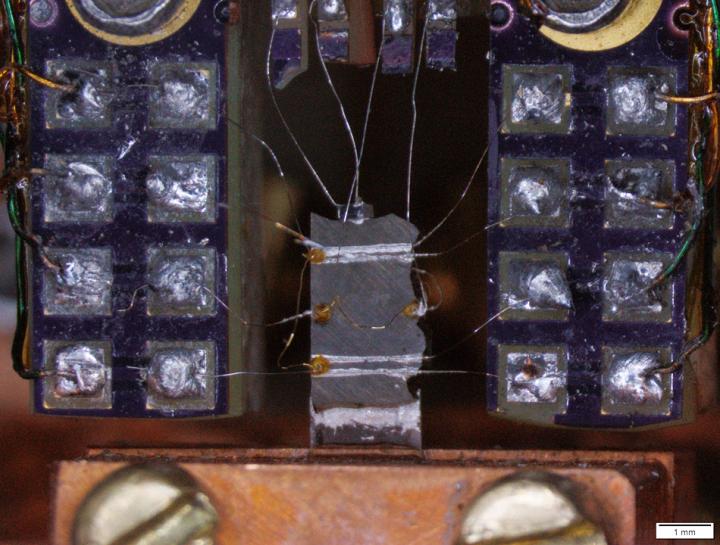Uranium Compound Achieves Record Anomalous Nernst Conductivity

Thermoelectric materials can convert a flow of heat directly into electricity, in a process called the Nernst effect. This is useful for applications that require lightweight and reliable power generation, such as the radioisotope thermoelectric generator (RTG) currently powering the Perseverance rover on Mars. It was recently discovered that the anomalous Nernst effect is dramatically amplified in magnetic Weyl semimetals, due to the special properties of topological features in their electronic structure.
In a recently published work in Science Advances, UC Davis graduate student Vsevolod Ivanov and Professor Sergey Savrasov, in collaboration with experimentalists at Los Alamos National Laboratory, report a uranium-based Weyl compound that achieves an anomalous Nernst effect of 23 microvolts per kelvin, which is four times bigger than the previous record. They present a detailed analysis of the topological properties of this material, showing which features could be responsible for the unusual transport properties.

In this material, the magnetism, spin-orbit coupling, strong correlations, and kagome lattice structure work together to produce a colossal thermoelectric response, which suggests how even more efficient material could be discovered in the future.
Published: April 30, 2021, 11:39 am
